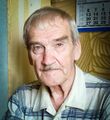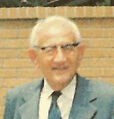Template:Selected anniversaries/September 7: Difference between revisions
No edit summary |
No edit summary |
||
| (30 intermediate revisions by the same user not shown) | |||
| Line 1: | Line 1: | ||
<gallery> | <gallery> | ||
|| | || *** DONE: Pics *** | ||
|| | ||1559: Robert Estienne dies ... printer and scholar. Pic. | ||
| | ||1695: Henry Every perpetrates one of the most profitable pirate raids in history with the capture of the Grand Mughal ship Ganj-i-Sawai. In response, Emperor Aurangzeb threatens to end all English trading in India. Pic. | ||
||1707 | ||1707: Georges-Louis Leclerc, Comte de Buffon born ... mathematician, cosmologist, and author. Pic. | ||
||Ernst Anton Nicolai | ||1722: Ernst Anton Nicolai born ... physician and chemist. He will be a follower of Leibniz' concept of monadism, seeking solutions to medical problems based on the philosophic viewpoints of Gottfried Leibniz. Pic search. | ||
||1776 | ||1776: According to American colonial reports, Ezra Lee makes the world's first submarine attack in the Turtle, attempting to attach a time bomb to the hull of HMS ''Eagle'' in New York Harbor (no British records of this attack exist). | ||
||1799 | ||1799: Louis-Guillaume Le Monnier dies ... botanist and physicist. No pic online. | ||
|| | File:Jan Ingenhousz.jpg|link=Jan Ingenhousz (nonfiction)|1799: Physiologist, biologist and chemist [[Jan Ingenhousz (nonfiction)|Jan Ingenhousz]] dies. Ingenhousz discovered photosynthesis, as well the fact that plants, like animals, have cellular respiration. | ||
|| | File:August Kekulé.jpg|link=August Kekulé (nonfiction)|1828: Organic chemist [[August Kekulé (nonfiction)|Friedrich August Kekulé]] born. Kekulé will be one of the most prominent chemists in Europe, especially in theoretical chemistry, and the principal founder of the theory of chemical structure. | ||
|| | ||1836: August Toepler born ... physicist and academic. Pic. | ||
|| | ||1844: Charles Romley Alder Wright born ... chemistry and physics researcher. Pic. | ||
|| | ||1884: Georges Jean Marie Valiron born ... mathematician, notable for his contributions to analysis, in particular, the asymptotic behavior of entire functions of finite order and Tauberian theorems. Pic search. | ||
||1909 | ||1905: Karl Walter Schröter born ... mathematician and logician. Later on, after the war, he made important contributions concerning semantic consequences (German: semantische Folgerungsrelationen) and provability logic (German: syntaktische Ableitbarkeitsrelationen). He worked as a mathematical theoretician and cryptanalyst for the civilian Pers Z S, the cipher bureau of the Foreign Office (German: Auswärtiges Amt), from Spring 1941 to the end of World War II. Pic. | ||
||1900: Giuseppe Zangara born ... Zangara will fatally shoot Anton Cermak in an assassination attempt against President-Elect Franklin D. Roosevelt. Pic. | |||
||1909: Eugène Lefebvre crashes a new French-built Wright biplane during a test flight at Juvisy, south of Paris, becoming the first aviator in the world to lose his life in a powered heavier-than-air craft. Pic. | |||
||1912: Electrical engineer David Packard born ... co-founder, with William Hewlett, of Hewlett-Packard. Pic. | |||
||1913: Alexander Yakovlevich Lerner born ... scientist and Soviet refusenik. Cybernetics. Pic: https://ru.wikipedia.org/wiki/%D0%9B%D0%B5%D1%80%D0%BD%D0%B5%D1%80,_%D0%90%D0%BB%D0%B5%D0%BA%D1%81%D0%B0%D0%BD%D0%B4%D1%80_%D0%AF%D0%BA%D0%BE%D0%B2%D0%BB%D0%B5%D0%B2%D0%B8%D1%87 | |||
File:James Van Allen.jpg|link=James Van Allen (nonfiction)|1914: Physicist and philosopher [[James Van Allen (nonfiction)|James Van Allen]] born. The Van Allen radiation belts will be named after him, following their discovery by his Geiger–Müller tube instruments aboard satellites in 1958. | File:James Van Allen.jpg|link=James Van Allen (nonfiction)|1914: Physicist and philosopher [[James Van Allen (nonfiction)|James Van Allen]] born. The Van Allen radiation belts will be named after him, following their discovery by his Geiger–Müller tube instruments aboard satellites in 1958. | ||
||1915 | ||1915: Kiyosi Itô born ... mathematician and academic. Pic. | ||
||1917 | ||1917: John Cornforth born ... chemist and academic, Nobel Prize laureate. Pic. | ||
||Peter Ludwig Mejdell Sylow | ||1918: Peter Ludwig Mejdell Sylow dies ... mathematician who proved foundational results in group theory. Pic. | ||
||Alfred Schild | ||1921: Alfred Schild born ... physicist, well known for his contributions to the Golden age of general relativity (1960–1975). Pic: https://ru.wikipedia.org/wiki/%D0%A8%D0%B8%D0%BB%D1%8C%D0%B4,_%D0%90%D0%BB%D1%8C%D1%84%D1%80%D0%B5%D0%B4 | ||
||1923: The International Criminal Police Organization (INTERPOL) is formed. | ||1923: The International Criminal Police Organization (INTERPOL) is formed. | ||
||1925: Robert Jastrow born ... astronomer and planetary physicist. He was a NASA scientist, popular author, and futurist. Pic search. | |||
File:Philo T Farnsworth.jpg|link=Philo Farnsworth (nonfiction)|1927: The first fully electronic television system is achieved by inventor [[Philo Farnsworth (nonfiction)|Philo Farnsworth]]. | File:Philo T Farnsworth.jpg|link=Philo Farnsworth (nonfiction)|1927: The first fully electronic television system is achieved by inventor [[Philo Farnsworth (nonfiction)|Philo Farnsworth]]. | ||
File: | File:Kurt Gödel.jpg|link=Kurt Gödel (nonfiction)|1930: Mathematician [[Kurt Gödel (nonfiction)|Kurt Godel]] announced his famous Incompleteness Theorem -- that there are true but unprovable statements in arithmetic -- in a discussion on the foundations of mathematics organized by the Vienna Circle. | ||
||1936: Marcel Grossmann dies ... mathematician and a friend and classmate of Albert Einstein. Pic. | ||1936: Marcel Grossmann dies ... mathematician and a friend and classmate of Albert Einstein. Pic. | ||
||1939: Stanislav Yevgrafovich Petrov . | File:Stanislav Yevgrafovich Petrov.jpg|link=Stanislav Petrov (nonfiction)|1939: Soviet Air Defense office [[Stanislav Petrov (nonfiction)|Stanislav Yevgrafovich Petrov]] born. Petrov will became known as "the man who single-handedly saved the world from nuclear war" for his role in the 1983 Soviet nuclear false alarm incident. | ||
||1940: World War II: The German Luftwaffe begins the Blitz, bombing London and other British cities for over 50 consecutive nights | ||1940: World War II: The German Luftwaffe begins the Blitz, bombing London and other British cities for over 50 consecutive nights | ||
||1956: Otto | ||1954: Bud Fisher dies ... cartoonist. Pic. | ||
||1956: Otto Schmidt dies ... scientist, mathematician, astronomer, geophysicist, statesman, academician, Hero of the USSR (27 June 1937), and member of the Communist Party. Pic. | |||
||1960: Sodium Reactor Experiment restarted after being offline for months due to clogged cooling channels. Pic. | |||
||1965: Jesse Douglas dies ... mathematician and academic. He will contribute a general solution of the Problem of Plateau, which asks whether a minimal surface exists for a given boundary. The problem, open since 1760 when Lagrange raised it, is part of the calculus of variations and is also known as the soap bubble problem. Pic: https://www.gf.org/fellows/all-fellows/jesse-douglas/ | |||
||1965: Vietnam War: In a follow-up to August's Operation Starlight, United States Marines and South Vietnamese forces initiate Operation Piranha on the Batangan Peninsula. | ||1965: Vietnam War: In a follow-up to August's Operation Starlight, United States Marines and South Vietnamese forces initiate Operation Piranha on the Batangan Peninsula. | ||
||1978: While walking across Waterloo Bridge in London, Bulgarian dissident Georgi Markov is assassinated by Bulgarian secret police agent Francesco Giullino by means of a ricin pellet fired from a specially-designed umbrella. | ||1977: Chemist Richard Helmuth Frederick Manske dies. First synthesized DMT. Pic: https://www.findagrave.com/memorial/89667801/richard-helmuth_frederick-manske | ||
||1978: While walking across Waterloo Bridge in London, Bulgarian dissident Georgi Markov is assassinated by Bulgarian secret police agent Francesco Giullino by means of a ricin pellet fired from a specially-designed umbrella. Pic. | |||
||1983: Boris Caesar Wilhelm Hagelin dies ... businessman and inventor of encryption machines. | ||1983: Boris Caesar Wilhelm Hagelin dies ... businessman and inventor of encryption machines. Pic. | ||
File:George_Pólya_circa_1973.jpg|link=George Pólya (nonfiction)|1985: Mathematician [[George Pólya (nonfiction)|George Pólya]] dies. He made fundamental contributions to combinatorics, number theory, numerical analysis and probability theory. | File:George_Pólya_circa_1973.jpg|link=George Pólya (nonfiction)|1985: Mathematician [[George Pólya (nonfiction)|George Pólya]] dies. He made fundamental contributions to combinatorics, number theory, numerical analysis and probability theory. | ||
||Nelson | ||1986: Nelson Dunford dies ... mathematician, known for his work in functional analysis, namely integration of vector valued functions, ergodic theory, and linear operators. The Dunford decomposition, Dunford–Pettis property, and Dunford-Schwartz theorem bear his name. Pic search book cover. | ||
||1991 | ||1991: Edwin McMillan dies ... physicist and chemist, Nobel Prize laureate. Pic. | ||
||2004: Ralph Eugene Lapp dies ... nuclear physicist and author who began his career in high-energy physics research with Arthur H. Compton. Lapp then worked at Chicago on the Manhattan Project. With 69 others, he signed Leo Szilard’s 17 Jul 1945 petition to President Truman, the month before the attack on Hiroshima. They urged that Japan should have an opportunity to surrender before use of the atom bomb. (Nevertheless, the actual attack was by surprise.) After the war, he researched the results in Japan. Lapp lectured across the U.S. He wrote 22 books on nuclear safety, including the dangers of nuclear fallout in The Voyage of the Lucky Dragon (1958). A Post book reviewer in 1956 called him “a one-man atomic truth squad and nuclear lie detector.” Pic: http://www.hrc.utexas.edu/multimedia/video/2008/wallace/lapp_ralph_t.html See also https://www.c-span.org/video/?288934-1/mike-wallace-interview-ralph-lapp https://www.youtube.com/watch?v=G2-tnC5doaI | ||2004: Ralph Eugene Lapp dies ... nuclear physicist and author who began his career in high-energy physics research with Arthur H. Compton. Lapp then worked at Chicago on the Manhattan Project. With 69 others, he signed Leo Szilard’s 17 Jul 1945 petition to President Truman, the month before the attack on Hiroshima. They urged that Japan should have an opportunity to surrender before use of the atom bomb. (Nevertheless, the actual attack was by surprise.) After the war, he researched the results in Japan. Lapp lectured across the U.S. He wrote 22 books on nuclear safety, including the dangers of nuclear fallout in The Voyage of the Lucky Dragon (1958). A Post book reviewer in 1956 called him “a one-man atomic truth squad and nuclear lie detector.” Pic: http://www.hrc.utexas.edu/multimedia/video/2008/wallace/lapp_ralph_t.html See also https://www.c-span.org/video/?288934-1/mike-wallace-interview-ralph-lapp https://www.youtube.com/watch?v=G2-tnC5doaI | ||
||2013: Physicist and academic Albert Allen Bartlett dies ... lectured on Arithmetic, Population, and Energy.[3][4] Bartlett regarded the word combination "sustainable growth" as an oxymoron, since even modest annual percentage population increases will inevitably equate to huge exponential growth over sustained periods of time. He therefore regarded human overpopulation as "The Greatest Challenge" facing humanity. Pic. | |||
</gallery> | </gallery> | ||
Latest revision as of 12:49, 7 February 2022
1799: Physiologist, biologist and chemist Jan Ingenhousz dies. Ingenhousz discovered photosynthesis, as well the fact that plants, like animals, have cellular respiration.
1828: Organic chemist Friedrich August Kekulé born. Kekulé will be one of the most prominent chemists in Europe, especially in theoretical chemistry, and the principal founder of the theory of chemical structure.
1914: Physicist and philosopher James Van Allen born. The Van Allen radiation belts will be named after him, following their discovery by his Geiger–Müller tube instruments aboard satellites in 1958.
1927: The first fully electronic television system is achieved by inventor Philo Farnsworth.
1930: Mathematician Kurt Godel announced his famous Incompleteness Theorem -- that there are true but unprovable statements in arithmetic -- in a discussion on the foundations of mathematics organized by the Vienna Circle.
1939: Soviet Air Defense office Stanislav Yevgrafovich Petrov born. Petrov will became known as "the man who single-handedly saved the world from nuclear war" for his role in the 1983 Soviet nuclear false alarm incident.
1985: Mathematician George Pólya dies. He made fundamental contributions to combinatorics, number theory, numerical analysis and probability theory.






